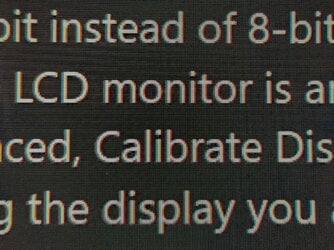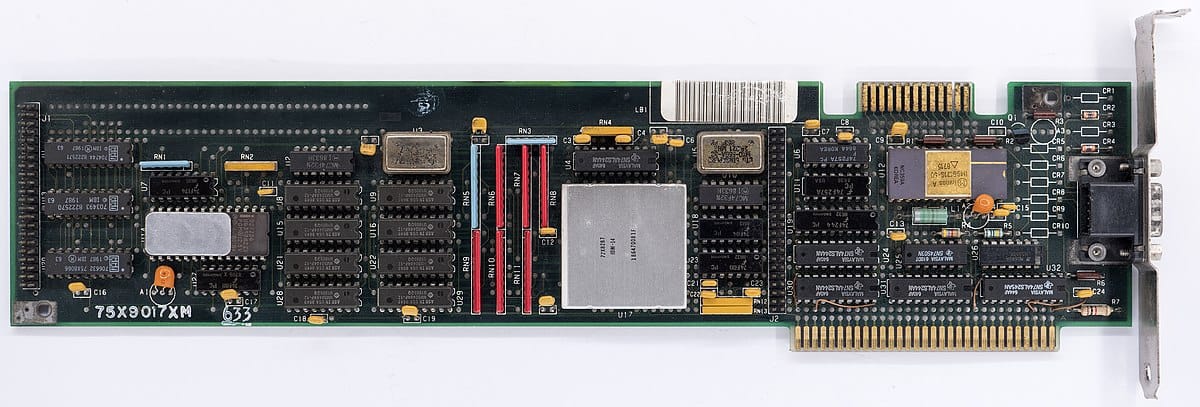Hello!
Probably cannot be done, at least with my hardware, but I wanted to ask just in case. I have read about professional graphics cards of the 90's that could give 10-bit per color channel to get better image for image editing. There was no DVI or HDMI or DP back then, they gave this on analog VGA monitors. So I wonder if there is any modern card that can give more than 8-bit per color channel through analog VGA connection. Probably a professional Quadro card can. Do you need a special monitor, or any monitor with VGA input will do? Is there any hack to force a consumer level card (such as my GeForce GTX 1050 Ti) to output more than 8-bit per color channel through VGA (through a DP to VGA adapter I have connected to the DP output)? How? Do I need a special monitor, or any monitor with VGA input (such as my Sony 19" TV) is OK?
Thank you very much.
PS: I didn't know which section was appropriate to post it. If it should be at another section, move it as appropriate.
Probably cannot be done, at least with my hardware, but I wanted to ask just in case. I have read about professional graphics cards of the 90's that could give 10-bit per color channel to get better image for image editing. There was no DVI or HDMI or DP back then, they gave this on analog VGA monitors. So I wonder if there is any modern card that can give more than 8-bit per color channel through analog VGA connection. Probably a professional Quadro card can. Do you need a special monitor, or any monitor with VGA input will do? Is there any hack to force a consumer level card (such as my GeForce GTX 1050 Ti) to output more than 8-bit per color channel through VGA (through a DP to VGA adapter I have connected to the DP output)? How? Do I need a special monitor, or any monitor with VGA input (such as my Sony 19" TV) is OK?
Thank you very much.
PS: I didn't know which section was appropriate to post it. If it should be at another section, move it as appropriate.
My Computers
System One System Two
-
- OS
- Windows 11 Pro 23H2 64-bit (build 22631.3374)
- Computer type
- Laptop
- Manufacturer/Model
- Acer Extensa 5630EZ
- CPU
- Mobile DualCore Intel Core 2 Duo T7250, 2000 MHz
- Motherboard
- Acer Extensa 5630
- Memory
- 4GB
- Graphics Card(s)
- Mobile Intel(R) GMA 4500M (Mobile 4 series)
- Sound Card
- Realtek ALC268 @ Intel 82801IB ICH9 - High Definition Audio Controller
- Monitor(s) Displays
- 1
- Screen Resolution
- 1280x800
- Hard Drives
- Samsung SSD 850 EVO 250GB SATA Device (250 GB, SATA-III)
- Internet Speed
- VDSL 50 Mbps
- Browser
- MICROSOFT EDGE
- Antivirus
- WINDOWS DEFENDER
- Other Info
- Legacy MBR installation, no TPM, no Secure Boot, no WDDM 2.0 graphics drivers, cannot get more unsupported ;) This is only my test laptop. I had installed Windows 11 here before upgrading my main PC. For my main PC I use everyday see my 2nd system specs.
-
- Operating System
- Windows 11 Pro v23H2 (build 22631.3374)
- Computer type
- PC/Desktop
- Manufacturer/Model
- Custom-built PC
- CPU
- Intel Core-i7 3770 3.40GHz s1155 (3rd generation)
- Motherboard
- Asus P8H61 s1155 ATX
- Memory
- 2x Kingston Hyper-X Blu 8GB DDR3-1600
- Graphics card(s)
- Gainward NE5105T018G1-1070F (nVidia GeForce GTX 1050Ti 4GB GDDR5)
- Sound Card
- Realtek HD audio (ALC887)
- Monitor(s) Displays
- Sony Bravia KDL-19L4000 19" LCD TV via VGA
- Screen Resolution
- 1440x900 32-bit 60Hz
- Hard Drives
- Patriot Burst Elite 480GB SSD as system disk, Western Digital Caviar Purple 4TB SATA III (WD40PURZ) as second
- PSU
- Thermaltake Litepower RGB 550W Full Wired
- Case
- SUPERCASE MIDI-TOWER
- Cooling
- Stock Intel CPU Fan, 1x 8cm fan at the back
- Mouse
- Sunnyline OptiEye PS/2
- Keyboard
- Mitsumi 101-key PS/2
- Internet Speed
- 100Mbps
- Browser
- Microsoft Edge, Mozilla Firefox
- Antivirus
- Microsoft Windows Defender
- Other Info
- Legacy BIOS (MBR) installation, no TPM, no Secure Boot, WDDM 3.0 graphics drivers, WEI score 7.4






















